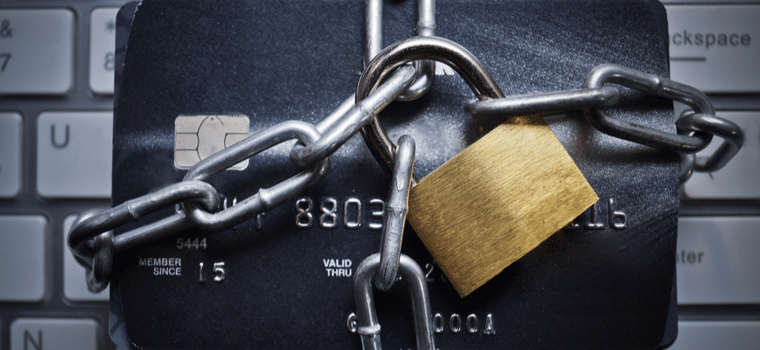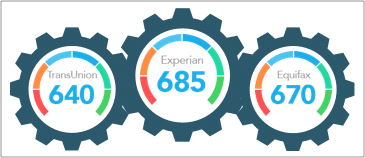A credit lock is a security tool used by credit reporting agencies to prevent identity theft. Essentially, locking your credit means that no one outside a select group of people or organizations can access your report. That makes it harder for thieves to apply for credit in your name.
Knowing about this option, and other credit protection alternatives can help you make strategic decisions to protect your identity. Keep reading to learn how to lock your credit and the benefits of taking this security step.
What Does it Mean to Lock Your Credit?
Locking your credit is the process of blocking lenders and other parties from accessing your credit report and pulling your credit score. Normally, creditors and lenders will access your report before making a decision about whether or not to extend you a loan or credit card. But if you have a lock on your report, they cannot do that, which means that no one, including you, can apply for credit or loans while your report is locked.
Typically, If you suspect that your personal information has been compromised by hackers or exposed in a data breach, then it is probably too late for a lock to be effective. At that point, you may want to look into a credit freeze. However, if you want a preventative tool to help you protect your report while allowing you more control over your credit, then a credit lock can prove effective.
How Do You Lock Your Credit?
If you want to lock your credit, then you need to apply for the credit locking programs through each of the major credit bureaus (Experian, TransUnion, and Equifax).
Credit locks are products created by Experian, Equifax and TransUnion. As such, they charge fees to lock your credit. As of this writing, those fees can range anywhere from $4.99 to $24.99 and can have an additional monthly fee. Each reporting agency will require you to fill out various forms confirming your identity and why you want to lock your credit and will require personal identification to do so (like your name and Social Security number).
When you lock your credit, you can allow certain people and organizations to access your credit reports. This way, if you need a company to pull your report for specific reasons, your credit lock won’t completely block these them out.
Outside of the individuals that you list, certain additional organizations will still have access to your report, including:
- Creditors who you already have an existing relationship with.
- Landlords and rental agencies that need to conduct background checks.
- Phone companies and other utilities groups.
- Debt collection agencies.
- Child-support administrative companies.
- Insurance underwriters.
- Government agencies acting on court orders or warrants.
Outside of this list, it is up to you to grant access when you know people will need to see your credit report. For example, you would need to grant access to a potential employer who wants to run a credit or background check before hiring you.
Pros of Locking Your Credit
Typically, borrowers lock their credit because they fear they are the victims of identity theft. However, there are a few benefits to locking your credit outside of an emergency. These include:
- Locking your report decreases your risk of becoming a victim of identity theft because creditors can’t access your reports.
- Credit locks are flexible, which means you can easily unlock your credit reports if you need a verified lender to check your credit.
Note that a credit lock is not always effective when you are already a victim of identity theft, but it can be a preventative measure. For an added benefit, you can enjoy the peace of mind in knowing that your credit is protected, even when various companies experience data breaches.
Cons of Locking Your Credit
Before you start locking your credit, consider a few drawbacks of setting up locks:
- A credit lock only covers a single report, which means you have to lock your credit through all the major bureaus.
- While a credit lock may reduce your risk of future identify theft, it does not protect against existing cases of identity theft and fraud.
- Credit lock services are created by the consumer bureaus. This means they may be tied to additional services related to your credit.
Essentially, you can’t lock your credit after you know that your identity is stolen. While it is never too late to protect your credit, a credit lock will not make your existing problems disappear.
What Is the Difference Between a Credit Lock and Credit Freeze?
A credit lock and credit freeze may seem similar at first, but there are significant differences between the two. The main difference is that a credit freeze is more thorough, in that it stops anyone from accessing your reports or opening accounts in your name. Conversely, it is much harder to “unfreeze” your credit than it is to unlock your reports.
Some of the main differences are:
- Credit freezes are free across all reporting agencies. Access to credit freezes is mandated under federal law, which means their access is regulated and protected.
- As an adult, you can request a credit freeze for your children under the age of 16, protecting their credit until they are old enough to manage it on their own.
- A credit freeze can actually help you in a situation where identity theft has already occurred.
As far as convenience goes, a credit freeze is free and mandated by the Federal Trade Commission. However, a credit lock may be a better preventative option if you want to easily lift the lock or relock your credit to give a third-party access to your credit reports.
Learn How to Protect Your Credit
A credit lock is a flexible solution for protecting your credit; however, there are other ways you can limit your risk for identity theft. Learn more about identity theft through our resource guides, including our guide on whether you should freeze, flag, or lock your credit reports.




